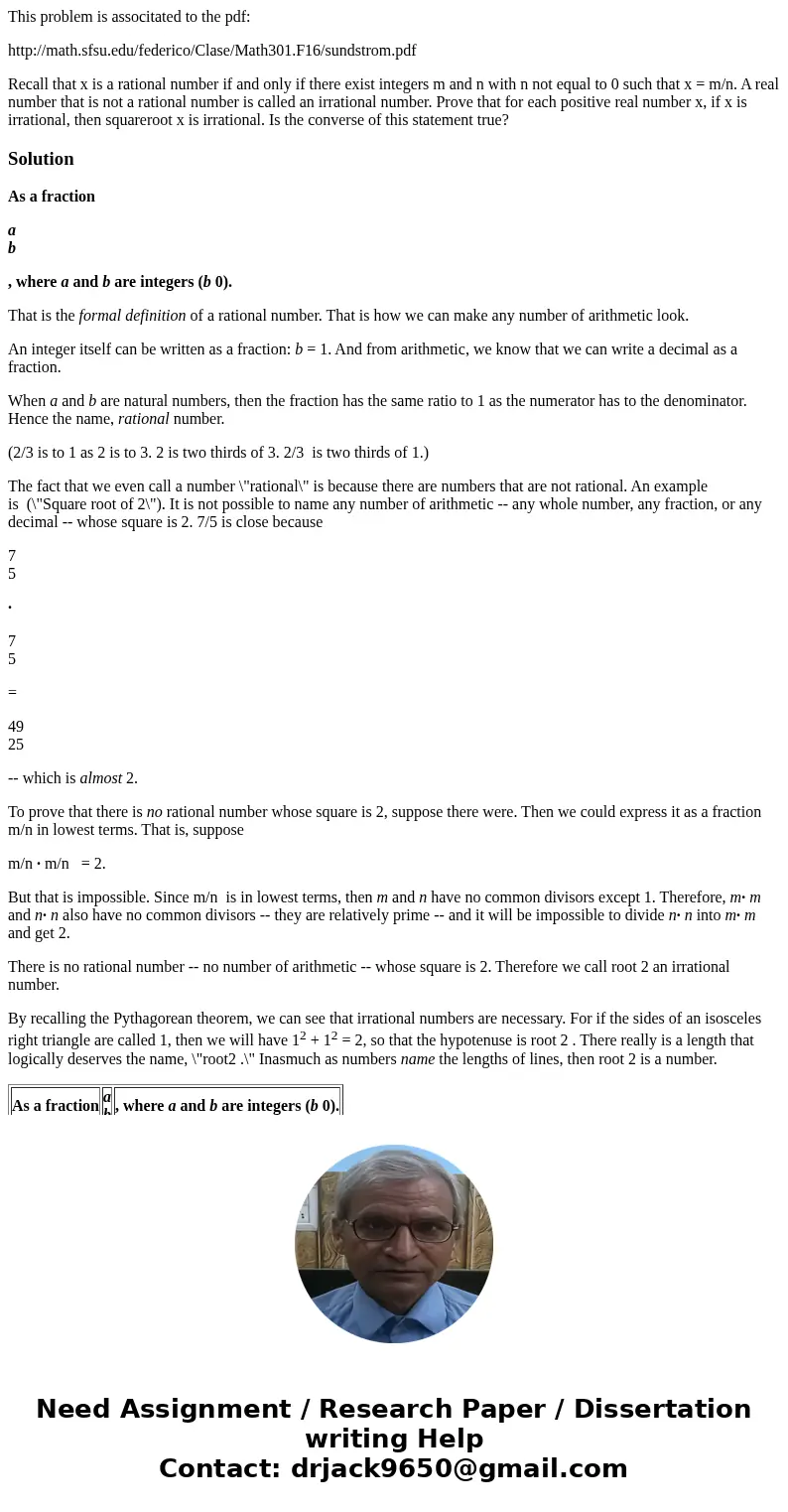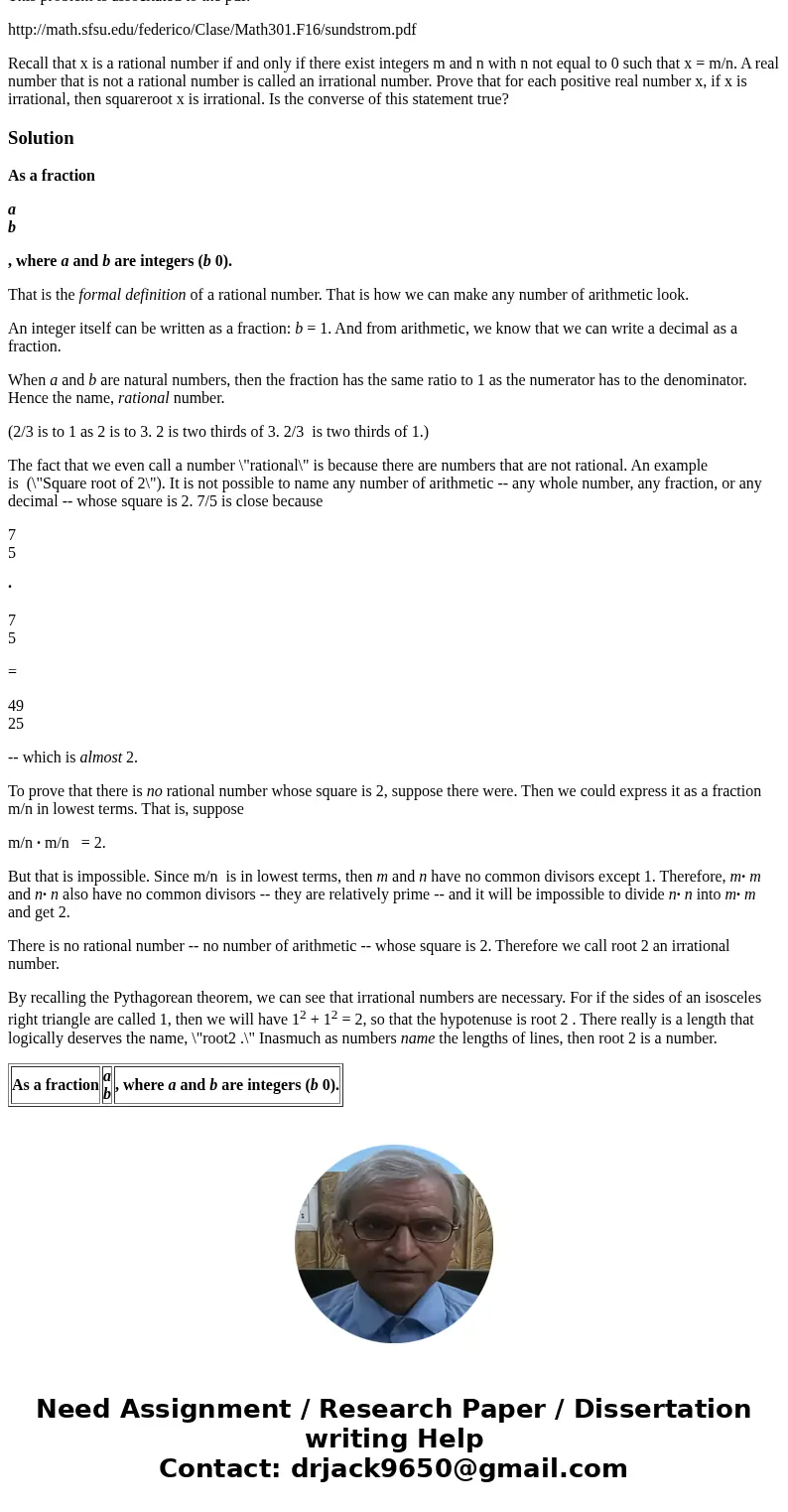This problem is associtated to the pdf httpmathsfsuedufederi
This problem is associtated to the pdf:
http://math.sfsu.edu/federico/Clase/Math301.F16/sundstrom.pdf
Recall that x is a rational number if and only if there exist integers m and n with n not equal to 0 such that x = m/n. A real number that is not a rational number is called an irrational number. Prove that for each positive real number x, if x is irrational, then squareroot x is irrational. Is the converse of this statement true?Solution
As a fraction
a
b
, where a and b are integers (b 0).
That is the formal definition of a rational number. That is how we can make any number of arithmetic look.
An integer itself can be written as a fraction: b = 1. And from arithmetic, we know that we can write a decimal as a fraction.
When a and b are natural numbers, then the fraction has the same ratio to 1 as the numerator has to the denominator. Hence the name, rational number.
(2/3 is to 1 as 2 is to 3. 2 is two thirds of 3. 2/3 is two thirds of 1.)
The fact that we even call a number \"rational\" is because there are numbers that are not rational. An example is (\"Square root of 2\"). It is not possible to name any number of arithmetic -- any whole number, any fraction, or any decimal -- whose square is 2. 7/5 is close because
7
5
·
7
5
=
49
25
-- which is almost 2.
To prove that there is no rational number whose square is 2, suppose there were. Then we could express it as a fraction m/n in lowest terms. That is, suppose
m/n · m/n = 2.
But that is impossible. Since m/n is in lowest terms, then m and n have no common divisors except 1. Therefore, m· m and n· n also have no common divisors -- they are relatively prime -- and it will be impossible to divide n· n into m· m and get 2.
There is no rational number -- no number of arithmetic -- whose square is 2. Therefore we call root 2 an irrational number.
By recalling the Pythagorean theorem, we can see that irrational numbers are necessary. For if the sides of an isosceles right triangle are called 1, then we will have 12 + 12 = 2, so that the hypotenuse is root 2 . There really is a length that logically deserves the name, \"root2 .\" Inasmuch as numbers name the lengths of lines, then root 2 is a number.
| As a fraction | a | , where a and b are integers (b 0). |


 Homework Sourse
Homework Sourse